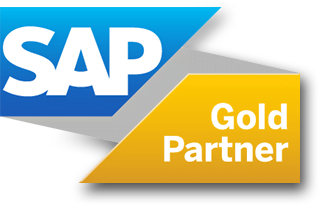Financial accounting in SAP Business One
SAP Business One is an ERP with integrated financial accounting. A large part of the journal entries are created automatically in the background when SAP users create documents and processes. Not all customers use integrated financial accounting to its full extent from the start.
With this blog entry we would like to present how integrated financial accounting can be used. In our everyday consulting work, we have encountered four different expansion stages.
Involve external service providers
If parts of the financial accounting cannot be covered by in-house staff, tax consulting staff can be involved instead and trained for SAP Business One.

1. Basic financial accounting
The company creates sales and purchasing documents in SAP Business One and passes all documents to the tax consultant, who then posts them.
Advantage:
Fast implementation of SAP Business One, as the finance module does not need to be configured.
Disadvantage:
Automatically created postings are not used
Tax consulting posts incoming and outgoing payments, so the company has delayed visibility into open receivables and open payables
Incomplete balance sheet and income statement in SAP Business One
Suitable for:
Small companies without a great deal of financial accounting knowledge that want to use SAP primarily as an enterprise resource planning system.
2. Simple financial accounting with DATEV export
The company creates sales and purchasing documents in SAP Business One. Automatically generated journal entries are transferred to the tax consultancy via DATEV export.
Advantage:
Automatically created entries are used by the tax consultancy, no double entries
Disadvantage:
Before implementing SAP Business One, the financial module must be configured so that the automatically generated journal entries, address those G/L accounts that the tax consultancy has already addressed before implementing SAP Business One
Tax consulting posts incoming and outgoing payments, so the company has delayed visibility into open receivables and open payables
Incomplete balance sheet and income statement in SAP Business One.
Suitable for:
Small businesses with intermediate financial accounting skills that want to use SAP Business One primarily as an enterprise resource planning system, but do not want to double-book the automatically generated journal entries.
3. Advanced financial accounting
The company creates sales and purchasing documents in SAP Business One and posts incoming and outgoing payments in SAP Business One. Automatically generated journal entries are transferred to the tax consultancy via DATEV export.
Advantage:
Automatically created postings are used by the tax consulting department
List of open customer receivables and open vendor payables in SAP Business One.
Disadvantage:
Before implementing SAP Business One, the financial module must be configured so that the automatically generated journal entries, address the G/L accounts that the tax consultancy has already addressed before implementing SAP Business One
Incomplete balance sheet and income statement in SAP Business One.
Suitable for:
Small businesses with intermediate financial accounting skills that want to use SAP Business One as an enterprise resource planning system, track open items in a timely manner, and avoid double-posting automatically generated journal entries.
4. Full financial accounting
The company creates sales and purchasing documents in SAP Business One, posts incoming and outgoing payments in SAP Business One, asset accounting is done in SAP, wages are imported and the sales tax return is transferred to the tax office via the Elster add-on. At the end of the year, journal entries are transferred to the tax consultancy via DATEV export or exclusively the annual transaction figures. The year-end journal entries created by the tax consultancy are transferred to SAP Business One, so that the same entries are available in SAP Business One and the tax consultancy’s software.
Advantage:
All journal entries take place in SAP Business One
Complete balance sheet and income statement in SAP Business One
Complete list of open receivables and open payables in SAP Business One
Disadvantage:
Before implementing SAP Business One, the finance module must be configured
Suitable for:
Mid-sized and larger companies with extensive financial accounting knowledge









